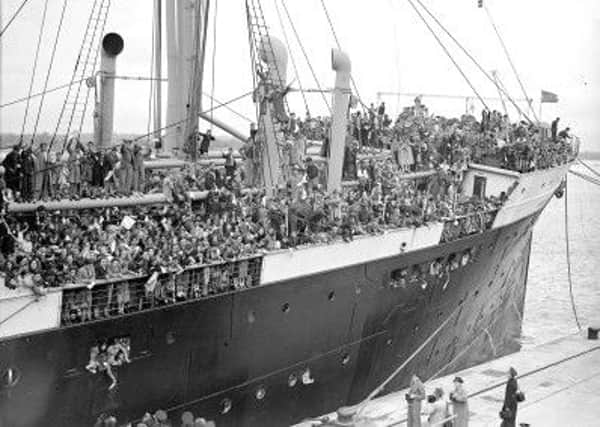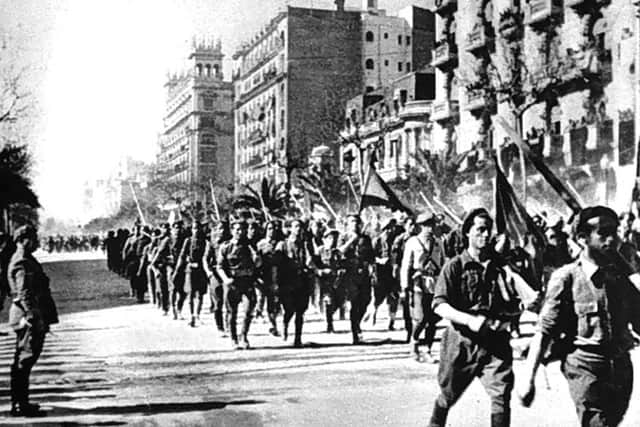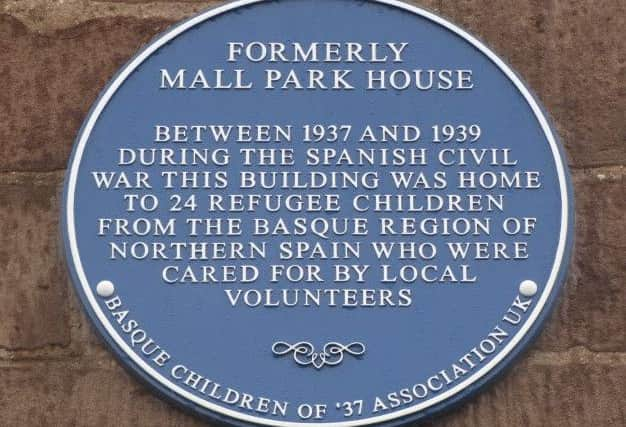Scotland's forgotten Spanish Civil War refugee colony


The message of Long Live Spain may have been small comfort to the 24 boys and girls who had arrived in Montrose from the Basque Country, torn away from their families to escape the Spanish Civil War.
Growing pockets of support in Scotland for the work of the fascist fighting International Brigade led to calls for the country’s first Basque refugee colony to be set up in the north east.
Advertisement
Hide AdAdvertisement
Hide AdIn Dundee, efforts intensified to ‘adopt’ children affected by the conflict following the bombing on Guernica in April 1937.


The city had already donated an ambulance to the IB with around 150 volunteers from the city signing up to its British Battalion. Around 550 went from Scotland in all.
The prospect of bringing the children to the city was first raised at a public meeting in the Caird Hall the following month.
Deep pockets of support were also found in mining towns and villages across Fife.


The meeting heard form a Miss May Wilson, 1 Hyndford Place, Dundee, who was to leave for Southampton where an estimated 4,000 refugee children were due to arrive from Bilbao, according to a report in The Courier.
A fluent Spanish speaker, Miss Wilson had been in Spain as a missionary when war broke out with her home bombed out during fighting.
Over the following months, numerous trades groups and church organisations rallied to support the cause with money donated by the Shop Assistants’ Union, the Baker’s Union and Society of Friends and a group of fish traders, amongst others.


Advertisement
Hide AdAdvertisement
Hide AdA football match between Dundee Dockers and Spanish Seamen raised more than £5.2s on the gate with a further donation of £5.6s from the Spanish crew raising hopes of increasing the number of children that could be “adopted” in the north east, according to reports.
Writer and historian Daniel Gray, in his book Homage to Caledonia, Scotland and the Spanish Civil War, describes the support for the children as the “most significant Dundonian act of solidarity.”
But accommodation that would allow the majority of children to stay together proved hard to find, despite 34 separate groups now supporting the campaign to find a temporary home for Basque children.
A request to use the Church of Scotland’s Boy’s Home in South Ellen Street was turned down, archives held by the Basque Children of ‘37 Association recorded.


Further lobbying came from Kitty Murray, the Duchess of Atholl, Scotland’s first female MP, but her intervention held no sway and indeed her involvement drew criticism in newspaper letters pages.
St Andrews Town Council turned down an application to hold a Flag Day to raise awareness of the Basque refugees with one local councillor, Baillie McGregor, claiming “that everyone knew of the trouble which Basque children had caused in other parts of the country and did not see why they should be encouraged,” according to notes in the Basque ‘37 archive.
Gray, in his book, describes the councillor’s comments as a “rare voice of dissent” at the time.
Advertisement
Hide AdAdvertisement
Hide AdFinally, on September 14 1937, it was announced that a home in Montrose had been offered up Mr A. Inglis-Shepherd, President of the Dundee Free Breakfast
Mission.
The 14 girls and 10 boys arrived just a few days later form Eastleigh in Hampshire to make their home at Mall Park House, an ample Victorian pile in a quiet, pleasant street off the town’s main road.
Gray describes their experience in Homage to Caledonia.
He said: “They integrated well into the community and donations towards maintaining the home continued for the duration of their stay, which came to an end in the summer of 1938.
“Though distraught with homesickness and worry for their families in Spain, the children did find great contentment in Scotland’s only Basque refugee colony.”
He drew on comments made by one girl, Bene Gonzalez, who was 15 when she arrived in Montrose.
She recalled that the children lived “immensely happily and joyfully” in their new home.
Gray added in his book: “Scotland had left is mark on the young Basques but so too had they affected the people of Dundee and Montrose. Rarely before had a cause been embraced by communists, socialists, liberals, churches and businesses as theirs was.”
Advertisement
Hide AdAdvertisement
Hide AdA blue plaque now marks the home where the children took refuge in Scotland.
DOWNLOAD THE SCOTSMAN APP ON ITUNES OR GOOGLE PLAY
